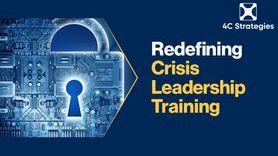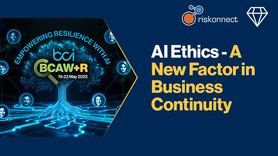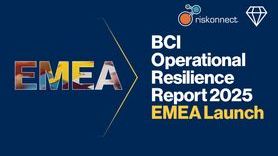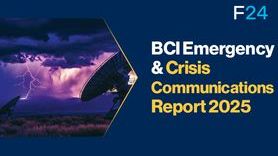The operational resilience concept in a railway company
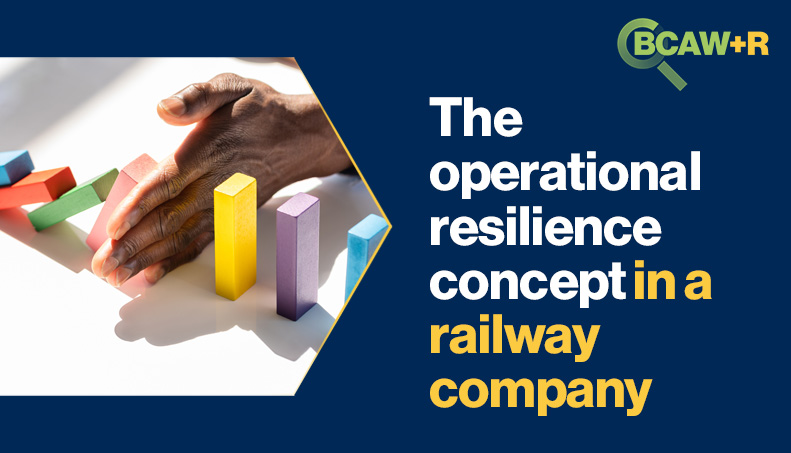
Executive summary
The target organization of the proposed case study is an international company that delivers railway products. 3Cs, as a consultancy company in the field of resilience and business continuity, supported the above-mentioned organization in implementing an operational resilience approach to be able to prepare, adapt, absorb and recover when a disruption occurs. To this end, an assessment model was developed with the purpose of investigating the different dimensions contributing to operational resilience and assigning them a maturity score. It resulted that the assessment model was a good starting point to develop a comprehensive operational resilience approach. Indeed, the results enabled to develop a remediation plan with the main actions of improvement on which the company should work to enhance its proactive preparedness. Moreover, given the different areas in scope, the project contributed to strengthening the integration and the cooperation among the business functions involved.
Introduction
3Cs is an innovative start-up working in the strategic consulting field of resilience and business continuity. We are a group of professionals who support organizations in preparing for and reacting to the unpredictability of today's context.
The organization of reference for this project is an international company that delivers railway products and railway maintenance services. These range from metro, commuter and high-speed rolling stock through traffic management, traction and signaling solutions.
The company is located all over the world and has a centralised structure for the management of business continuity activities. The actual business continuity approach suggests the implementation of recovery solutions for different crisis scenarios (i.e., unavailability of premises, of critical staff, of critical suppliers and of technology). It is mainly focused on a governance structure that is responsible for managing disruptive events. However, it could be interesting to easily adapt it to lower impactful disruptions.
The objective of the proposed project is to move from a business continuity to an operational resilience approach which is mainly focused on the integration of different dimensions such as crisis and emergency management, business continuity and information security. The aim is to favour the implementation of an approach which helps the organization in being better prepared but also to adapt, absorb and recover when a disruption occurs.
Challenges
The analysed company operates on multiple sites located all over the world. It mainly includes premises that have as main business the manufacturing of trains or trains’ components, offices and depots focused on maintenance activities.
The high variety of locations and products increases the complexity of the company and in particular points the attention on the multiple cultures and approaches that characterise the organization. Moreover, the organization is structured with cross-countries processes and it works by projects, which requires the involvement of several entities located around the world. Therefore, the ability to develop and implement an integrated approach among the different functions is fundamental in the perspective of operational resilience.
Actions taken
To define the areas to be included in the project, the first step was to analyse the main standards and regulations in relation to operational resilience. This led to the identification of the following operational resilience dimensions: business continuity management, information security, supply chain resilience, risk management, crisis and emergency management.
The project proceeded with the development of a questionnaire aimed at investigating the identified dimensions and assessing their level of maturity within the company. An assessment model was developed, and a specific questionnaire was delivered to collect the necessary information. The questions were focused on the elements that contribute to strengthening proactive preparedness and enhancing overall operational resilience.
Given the different areas in scope, it was necessary to involve several business functions that were asked to answer the questions within their competence in an Excel sheet.
Results
The answers collected were analysed and, for each area, a score related to its resilience maturity was attributed.
Overall, it resulted that the company exhibits a medium-high degree of operational resilience maturity which contributes significantly to the ability to anticipate, respond to, and recover from operational disruptions. However, for each operational resilience dimension, the areas of improvement were identified, and a remediation plan was developed to formally assign the respective owner and define the associate deadline. The final step of the project was to monitor that the defined actions were correctly implemented.
Lessons learned
The project not only contributed to improve the maturity of the areas analyzed, but it also enabled to strengthen the integration and the cooperation among the business functions, a fundamental prerequisite to achieving an effective operational resilience approach.
In this regard, one of the aspects that could be improved for the future is the method for submitting the questionnaire. An Excel sheet is the quickest tool to collect answers from different contributors but, to foster cooperation already from the initial project phase, it could be more useful to organize workshops or working groups.
Finally, the fact of having a general model for the entire company enabled us to simplify the work but it was not always suitable since each product/site has its own peculiarity and could be managed differently. For the next projects, it is suggested to perform a preliminary evaluation to find the correct tradeoff between the simplification of the questionnaire and the inclusion of the peculiarities of each object under analysis.
Conclusion
The proposed case study was aimed at developing an operational resilience approach which goes beyond business continuity, integrating several dimensions. To this end, a model was developed and applied to a railway company to assess its maturity in terms of operational resilience.
The assessment was performed through a questionnaire focused on the dimensions that a company should address to foster its proactive preparedness. The wide range of themes showed the importance of involving different business functions that, together, contribute to the unique goal of enhancing operational resilience. The business continuity function could be responsible of guiding the transition towards operational resilience, thus promoting coordination and integration among all the involved actors.
The assessment can be considered as a starting point to develop a comprehensive operational resilience approach, since the analysis of the results enables the identification of the areas of improvement on which the company should focus.
One of the main advantages of the assessment model is that, with appropriate adjustments, it can be applied to different organizational contexts. Therefore, the same approach can be easily replicated for companies of other sectors, dimensions and complexity.





